Search the Special Collections and Archives Portal
Search Results
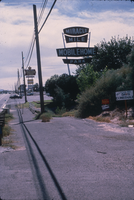
Slide of the Miracle Mile Mobile Home Park sign, Nevada, 1986
Date
1986
Archival Collection
Description
Miracle Mile Mobile Home Park located on the side of the Boulder Highway in Nevada. Site Name: Miracle Mile Mobile Home Park (Las Vegas, Nev.)
Image
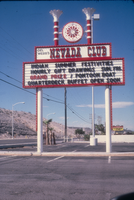
Slide of the neon sign for the Nevada Club, Laughlin, Nevada, 1986
Date
1986
Archival Collection
Description
A color image of the neon sign for Del Webb's Nevada Club. Site Name: Del Webb's Nevada Club (Laughlin, Nev.)
Image
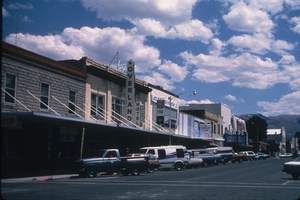
Slide of the Overland Hotel on Bridge Street, Winnemucca, Nevada, 1986
Date
1986
Archival Collection
Description
A color image of the exterior views and neons signs for the Overland Hotel, Frontier Club and Sage Theatre in Winnemucca. Site Name: Overland Hotel (Winnemucca, Nev.)
Image
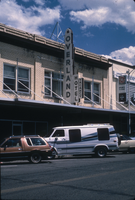
Slide of the Overland Hotel and its neon signs, Winnemucca, Nevada, 1986
Date
1986
Archival Collection
Description
A color image of the front exterior of the Overland Hotel and its neon signs. Site Name: Overland Hotel (Winnemucca, Nev.)
Image
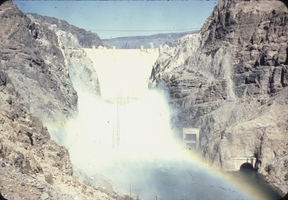
Slide of downstream face of Hoover Dam, circa late 1930s
Date
1935 to 1939
Archival Collection
Description
An image of expelled water creating a mist over the Colorado River on the downstream side of Hoover Dam in Black Canyon. Note: Boulder Dam was officially renamed Hoover Dam in 1947.
Image
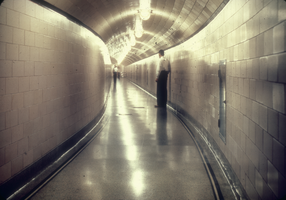
Slide of people in a visitor's tunnel at Hoover Dam, circa late 1930s
Date
1935 to 1939
Archival Collection
Description
An image of two men in one of the visitor's tunnels at Hoover Dam. Note: Boulder Dam was officially renamed Hoover Dam in 1947.
Image
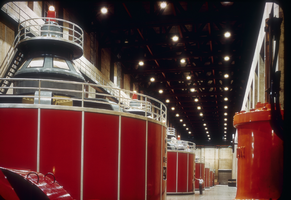
Slide of Hoover Dam generators, circa late 1930s
Date
1935 to 1939
Archival Collection
Description
An image of hydroelectric generators inside the powerhouse at Hoover Dam. A man standing next to one of the generators shows their scale. Note: Boulder Dam was officially renamed Hoover Dam in 1947.
Image
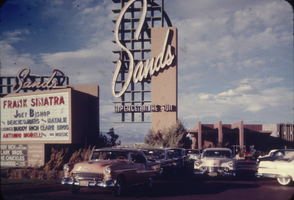
Slide of the Sands Hotel sign, Las Vegas, circa 1950s-1960s
Date
1952 to 1969
Archival Collection
Description
An image showing an exterior view of the Sands Hotel and Casino. Performances by Frank Sinatra and Joey Bishop are advertised on the marquee.
Image

Slide of the New Frontier, Las Vegas, circa 1950s-1960s
Date
1955 to 1967
Archival Collection
Description
An image showing an exterior view of the New Frontier Hotel and Casino. Performances by the Will Mastin Trio and Sammy Davis, Jr. are advertised on the marquee.
Image
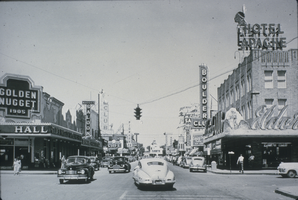
Slide of Fremont Street and Second Street, Las Vegas, circa 1940s
Date
1940 to 1949
Archival Collection
Description
A black and white daytime view of Second and Fremont Streets in downtown Las Vegas, including neon signs for the Golden Nugget, Hotel Apache, Eldorado Club, and the Boulder Club.
Image
Pagination
Refine my results
Content Type
Creator or Contributor
Subject
Archival Collection
Digital Project
Resource Type
Year
Material Type
Place
Language
Records Classification
